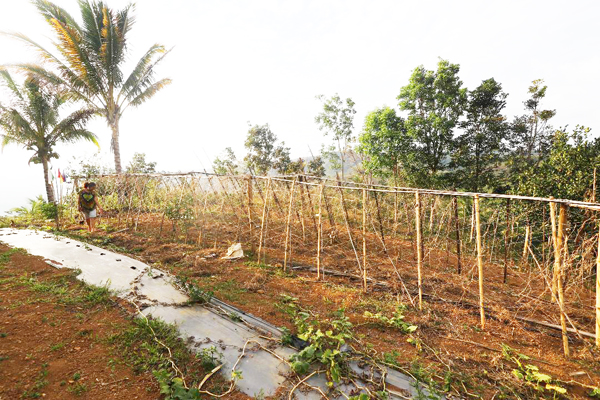DAVAO CITY – The provincial government has placed Maguindanao del Sur under a state of calamity due to the adverse impact of El Niño phenomenon.

A TEDURAY farmer inspects her farm destroyed by the extreme heat due to El Niño in South Upi, Maguindanao del Sur. (Keith Bacongco)
Damage to agricultural crops and livestock due to El Niño in the province that has reached P346 million.
Gov. Mariam Sangki-Mangudadatu has approved Resolution No. 39 passed by the provincial board on April 16 declaring a state of calamity in the province due to the prolonged dry spell.
The resolution cited that 20 out of the 24 towns have been affected by the dry spell.
Mangudadatu said that at least 5,600 farmers have lost their livelihood as extreme heat destroyed corn and rice farms, banana plantations, livestock, and poultry.
The province is one of the severely affected areas in the Bangsamoro Autonomous Region in Muslim Mindanao (BARMM). The BARMM is composed of the provinces of Basilan, Maguindanao del Norte, Maguindanao del Sur, Sulu, and Tawi-Tawi.
The Philippine Atmospheric, Geophysical, and Astronomical Services Administration (PAGASA) climate outlook said Maguindanao del Norte and Maguindanao del Sur are among provinces in the country with below normal rainfall this month.
The State weather bureau noted that Maguindanao is one of the seven provinces in Mindanao with dry spell conditions. An area under a dry spell condition has experienced two consecutive months of below normal rainfall condition or 21 to 60 percent average rainfall reduction.
The Provincial Disaster Risk Reduction and Management Office recorded that the heat index in the province in the last five days averaged 41 degrees Celsius.
The BARMM Ministry of Agriculture, Fisheries, and Agrarian Reform (MAFAR) reported that 19,731 hectares of corn and 5,472 hectares of rice in the region have been destroyed due to extreme heat. Almost 700 hectares of vegetable farms, 45 hectares of fruit trees, and 56 hectares of root crops were also destroyed, MAFAR added.